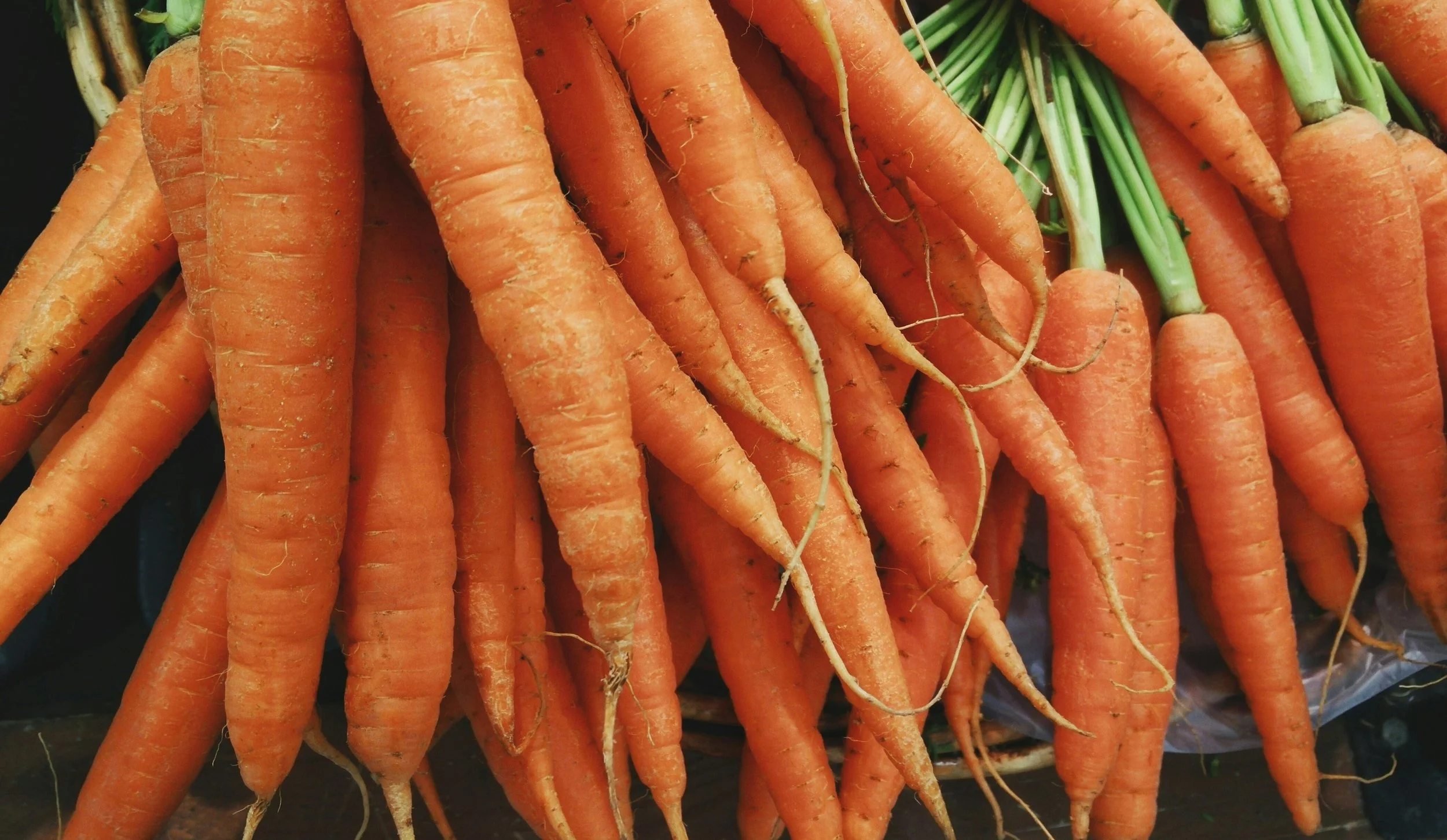
Turning Orange: Carotenemia
Turning Orange: Carotenemia
Written by: Sitara Nair
You might’ve heard the saying, “Don’t eat too many carrots or you’ll become one!”. Well, you probably know that you won’t actually turn into a carrot, but they aren’t entirely wrong. Eating too many carrots can often lead to a condition called carotenemia, a harmless yellowish-orange discoloration of the skin! Let’s find out more about this condition and what can cause it.
What is Carotenemia?
Carotenemia is a clinical condition distinguished by increased yellow pigmentation in the skin, resulting from elevated beta-carotene levels in the blood. This harmless condition is found more commonly in children rather than adults, and is caused by eating too many foods high in carotene, like carrots, squash, and sweet potatoes. It’s a misnomer that carotenemia will cause someone to turn bright orange like an Oompa Loompa, it’s more like they’ll have an orangeish tint to their skin!
Carotene is a natural compound called a lipochrome that typically gives the skin a yellowish tinge. When blood levels of carotene are higher than normal, this yellow tint becomes more noticeable. Carotenemia can be especially visible if the outer skin layer, the stratum corneum (the layer that forms a protective barrier between the body and the external environment), is thickened, or if there's a significant amount of fat beneath the skin. It's usually easier to see this condition in people with lighter skin tones, where it often shows up as a yellowing of the palms and soles in those with darker skin tones. Carotenemia causes yellow skin, more visible under artificial light, especially in sweating areas like palms, soles, and nasolabial folds (also known as smile lines), initially on the nose tip, then spreading. It results from carotene deposits in the fat layer.
Carotenemia is often mistaken for jaundice, a yellowing of the skin, eyes, and mucous membranes resulting from bilirubin buildup in the blood. In jaundice, the Sclerae are affected, and are defined in the Merriam Webster Dictionary as “the dense fibrous opaque white outer coat enclosing the eyeball except the part covered by the cornea”. Now, with carotenemia, this outer layer is unaffected; however, it might “occasionally may present with coloration of the palate” (MedScape).
History of Carotenemia
Carotenemia was first observed in the early 20th century, when doctors noticed an unusual skin coloring in children who consumed large amounts of pureed vegetables, particularly carrots and squash. Initially, this skin change sometimes caused confusion with more serious conditions like liver disease (which causes jaundice). However, as research progressed, it became clear that this discoloration was harmless; it was simply a cosmetic side effect of a diet high in foods rich in carotene. This discovery eased concerns for families by preventing unnecessary tests and treatments for their children’s unusual skin tones!
How Is Carotenemia Diagnosed?
Carotenemia is usually diagnosed based on appearance and diet. Doctors will ask patients about recent eating habits since foods like pumpkin, sweet potatoes, spinach, mangoes, and even certain baby foods can contribute. A blood test measuring carotene levels can confirm the diagnosis, but it's not always necessary. The key detail that helps doctors distinguish carotenemia from jaundice is that the whites of the eyes remain clear. As I mentioned before, this helps clinicians make accurate diagnoses.
Fun Facts and Misconceptions:
Many people think only carrots cause this change, but actually, any food high in carotenoids, like leafy greens such as kale or fruits like cantaloupe, can contribute. One fun fact is that carotenemia has some benefits since carotenoids are antioxidants that support your immune system and skin health. So, while turning a bit orange isn't necessarily the style everyone aims for, it’s actually a sign that your diet is rich in nutritious fruits and vegetables!
References
Cleveland Clinic. “Adult Jaundice: What It Is, Symptoms, Causes & Treatment.” Cleveland Clinic Health Library. Last reviewed March 14, 2024. https://my.clevelandclinic.org/health/symptoms/15367-adult-jaundice
Murphrey, Morgan B., Julia H. Miao, and Patrick M. Zito. “Histology, Stratum Corneum.” Updated November 14, 2022. In StatPearls [Internet]. Treasure Island (FL): StatPearls Publishing, January 2025. https://www.ncbi.nlm.nih.gov/books/NBK513299/.
Schwartz, Robert A., MD, MPH, and Dirk M. Elston, MD. “Carotenemia: Practice Essentials, Background, Pathophysiology.” eMedicine, updated March 14, 2023. https://emedicine.medscape.com/article/1104368-overview?form=fpf.
UAMS Health. “If You Eat Too Many Carrots, Will Your Skin Turn Orange?” UAMS Health Medical Myths. https://uamshealth.com/medical-myths/if-you-eat-too-many-carrots-will-your-skin-turn-orange/.
